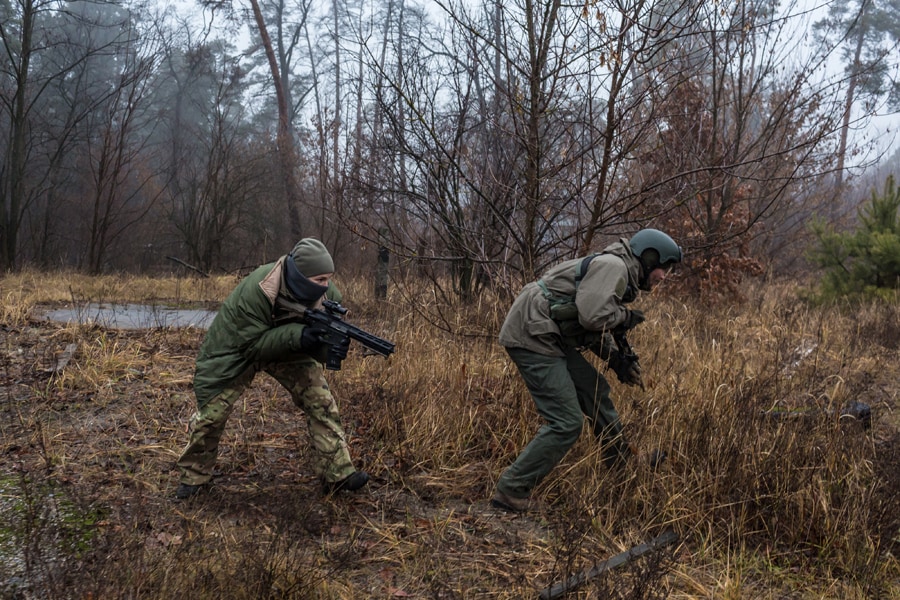
Training civilians, Ukraine nurtures a resistance in waiting
Ukraine has drawn a lesson from the United States' wars in Iraq and Afghanistan of the past two decades, when guerrillas provided enduring resistance in the face of vastly superior US firepower
 Anastasiia Bilotshitska, left, during a mock military exercise near Kyiv, Ukraine, Dec. 12, 2021. Eastern European nations have drawn a lesson from America’s wars of the last decades: Insurgency works. Ukraine’s training of volunteers has become a factor in the standoff with Russia. (Oksana Parafeniuk/The New York Times)
Anastasiia Bilotshitska, left, during a mock military exercise near Kyiv, Ukraine, Dec. 12, 2021. Eastern European nations have drawn a lesson from America’s wars of the last decades: Insurgency works. Ukraine’s training of volunteers has become a factor in the standoff with Russia. (Oksana Parafeniuk/The New York Times)
KYIV, Ukraine — In a pine forest not far from Ukraine’s capital, a mock battle raged. Commanders barked orders. Figures in camouflage huddled behind trees. A soldier fell to the ground, yelling for help.
His cries provided the cue for Anastasia Biloshitska, 25, to run into the line of fire, kneel in the mud and open her medical kit.
“People who are prepared won’t panic,” Biloshitska said.
Biloshitska is one of thousands of Ukrainian civilians who have signed up to learn combat skills in training programs created and run by the government and private paramilitary groups. The programs are part of the country’s strategic defense plan in the event of a potential invasion by Russia — to foster a civilian resistance that can carry on the fight if the Ukrainian military is overwhelmed.
There is no indication that President Vladimir Putin of Russia has made up his mind whether to launch an attack. But if one should come, even Ukraine’s own generals say their regular military stands little chance in a full-fledged invasion.
©2019 New York Times News Service







